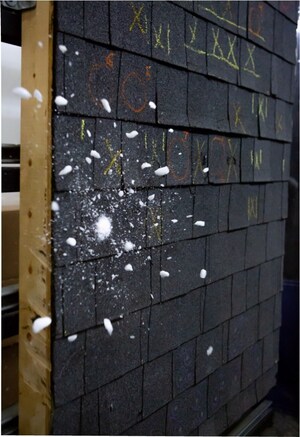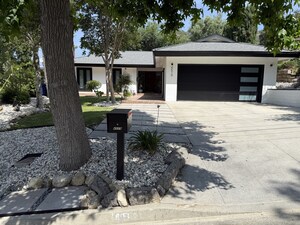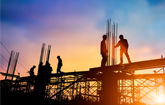
Building to Wildfire Prepared Home Plus standard makes a home more survivable and insurable, adds less than 3% to material costs
RICHBURG, S.C., Oct. 14, 2025 /PRNewswire/ -- The Insurance Institute for Business & Home Safety (IBHS) and Headwaters Economics today released a study examining the cost of rebuilding in Altadena, California, following the Eaton Fire. It finds constructing a wildfire-resistant home is both achievable and affordable, adding just 3% to the total cost of the building components that matter most for wildfire mitigation, such as roofing, siding and windows, compared to traditional building methods.
The report, Construction Costs for Wildfire-Resistant Homes, is based on a cost analysis of building a 1,750 square-foot, single-family home with an estimated construction cost of $500,000. The study centers on Altadena, a community that remains at high risk for wildfires, and comes in the wake of the devastating wildfires in January 2025 that destroyed more than 16,000 structures in the Los Angeles area. While certain wildfire standards are required in the Palisades, these resilient practices are not presently required throughout the Altadena recovery area.
The findings illustrate that wildfire preparedness is well within reach for the rebuilding families of Altadena. It costs only $15,000 more to rebuild a mid-range Altadena home to IBHS's Wildfire Prepared Home Plus instead of the traditional building code. New construction offers a critical opportunity to build safer homes at an affordable price, reducing the need for costly retrofits later and improving the insurability of the homes.
"This study from IBHS and Headwaters demonstrates being cost-conscious does not mean sacrificing safety," California Insurance Commissioner Ricardo Lara wrote in a cover letter to the report. "Building back safer yields significant insurance benefits. Some of California's largest insurance companies are now committing to writing policies for homes that meet the IBHS Wildfire Prepared Home standard — a commitment that I encourage other insurers to adopt. By meeting the Wildfire Prepared Home standards, the community will benefit from safer neighborhoods, lower insurance costs and more coverage options."
The study compares four construction scenarios: 1) traditional construction, 2) California's upcoming Wildland-Urban Interface Code (CWUIC) Part 7, 3) IBHS's Wildfire Prepared Home (WFPH) and 4) IBHS's Wildfire Prepared Home Plus (WFPH Plus) designation levels. It provides cost estimates for each method and focuses on wildfire relevant components of the home, including roofing, eaves, siding, windows and landscaping, which are critical to reducing ignition risk.
While IBHS's Wildfire Prepared Home is a solution for retrofitting existing homes, experts recommend building to Wildfire Prepared Home Plus during new construction for greater protection against embers, radiant heat and flames. Compared to the CWUIC, Wildfire Prepared Home Plus will add only about $2,000 in wildfire-resistant upgrades, such as enclosed eaves and dual-pane tempered windows, and also supports insurability. In high risk-areas like Altadena, taking the extra step for wildfire resilience can make a meaningful difference.
"Building a home that is affordable and protected from wildfires is not only possible, but financially practical," says Steve Hawks, senior director for wildfire at IBHS. "For around $50 a month added to a typical 30-year mortgage, homeowners can boost wildfire resilience to protect their property now, making it more survivable and insurable, and eliminating the need for a much more expensive retrofit later."
The study also highlights how easy, inexpensive maintenance strategies can dramatically reduce wildfire risk, including clearing vegetation and debris from gutters and the roof and creating a 5-foot noncombustible zone around the home.
"Wildfires are becoming more frequent and more intense across the West, but this study proves building a wildfire-resistant home can be a realistic and effective option," Dr. Kimiko Barrett, a wildfire policy expert at Headwaters Economics and co-author of the report, says. "You don't have to choose between safety and affordability."
According to the study, while the materials used to build a home and the 5 feet immediately surrounding it are critical to wildfire resilience, community-level mitigation is also essential. Reducing fuel sources between homes, including accessory buildings and fencing, and maintaining clear zones can disrupt fire pathways and protect entire neighborhoods. For the full Construction Costs for Wildfire-Resistant Homes report and IBHS's post-disaster studies on the Los Angeles County Fires, visit ibhs.org/lawildfires/.
About the Insurance Institute for Business & Home Safety (IBHS)
The IBHS mission is to conduct objective, scientific research to identify and promote effective actions that strengthen homes, businesses and communities against natural disasters and other causes of loss. Learn more at ibhs.org.
SOURCE Insurance Institute for Business & Home Safety








Share this article